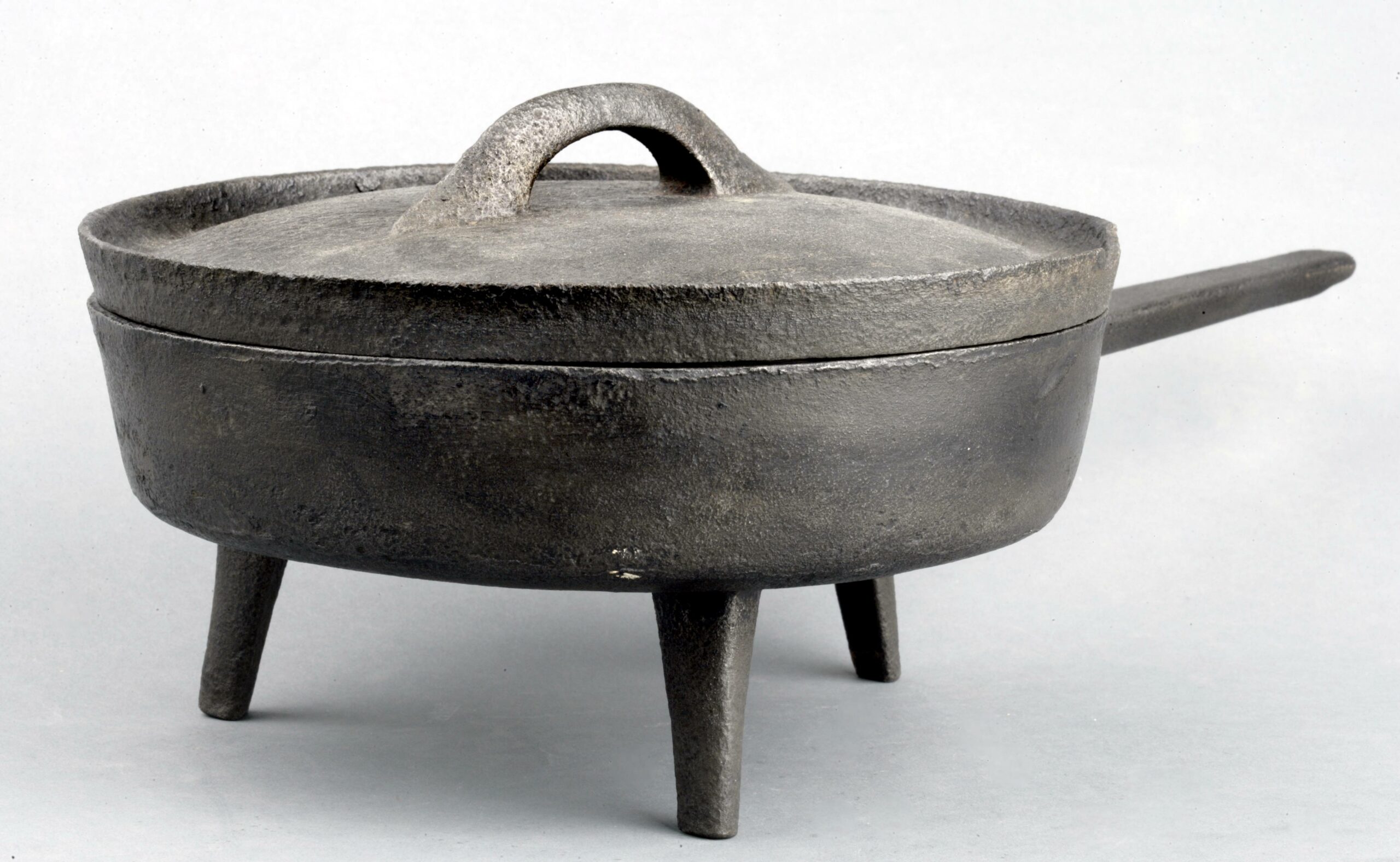Home / Early Encounters, 1492-1734 / French Colonies / Colonial Cooking
Resource
Colonial Cooking
Kitchen tools illustrate how women prepared food and developed new cooking methods in North American colonies.
- About
-
Curriculum
- Introduction
-
Units
- 1492–1734Early Encounters
- 1692-1783Settler Colonialism and the Revolution
- 1783-1828Building a New Nation
- 1828-1869Expansions and Inequalities
- 1832-1877A Nation Divided
- 1866-1898Industry and Empire
- 1889-1920Modernizing America
- 1920–1948Confidence and Crises
- 1948-1977Growth and Turmoil
- 1977-2001End of the Twentieth Century
- Discover
-
Search
Background
Women were responsible for the majority of the food preparation in the colony of New France. The process of prepping, preserving, and preparing food took up most of the day for the colony’s women. Only women in wealthy families could afford to pay to have servants do this work for them.
Like other European colonists in the Americas, the settlers of New France brought their food traditions with them. But the women of New France also experimented with incorporating the fruits, vegetables, and animals of North America into their cooking. Furthermore, a much shorter growing season compared to France created a need to adapt dishes to account for preserved foods. In the process, they created a diet that was unique to New France.
About the Image
Colonists could not afford to bring many objects with them from France, so they prized tools that could serve many purposes. For example, this cast iron skillet was a staple in colonial homes because it was so versatile. Women could use the skillet over a fire to fry ingredients, or they could place hot coals on the lid to bake bread.
The second object demonstrates how the women of New France created tools to adapt to the new food available. The maple tree was common in New France, and colonists learned from Indigenous communities how to tap the trees for sap. Colonial women boiled the sap to make maple syrup. This mold was used to turn the syrup into maple sugar candy. Hot boiled maple syrup was poured into the mold so it would harden into candy as it cooled down.
Vocabulary
- sap: The juice from a plant or tree.
- skillet: A frying pan with a handle.
Discussion Questions
- What would it be like to prepare a meal with a skillet and an open fire? What does this reveal about the lives of the women in New France?
- Why did French colonists create maple sugar candy molds? What does this teach us about their relationship with their environment?
- How was cooking long ago different from cooking today? How did this impact the lives of women then and now?
Suggested Activities
- APUSH Connection: 2.7 Colonial Society and Culture
- Include this resource in any lesson about daily life in the colonial era. These tools exemplify the cooking process, and how colonists adopted new foods and cooking techniques in the Americas.
- Have students put together a list of the cooking process, from growing the food to final preparation. How much time does each step take? What does that reveal about life in the colonies?
- Combine this resource with Mortar and Pestle for Pounding Rice and Indigenous Women and Agricultural Innovation to consider the importance of women’s labor in providing food for communities.
- Pair this resource with American Cookery to examine the development of local cuisine over time. How does food contribute to the development of identity?
- Combine this resource with Populating the Colonies to consider what daily life was like for women in New France.
- Cooking was a major responsibility for women who worked as servants in the American colonies. Teach this resource alongside any of the following to explore the hard work women performed as domestic servants:
- For a larger lesson on the daily life experiences of women in the colonies, combine this resource with any of the following:
Themes
DOMESTICITY AND FAMILY








